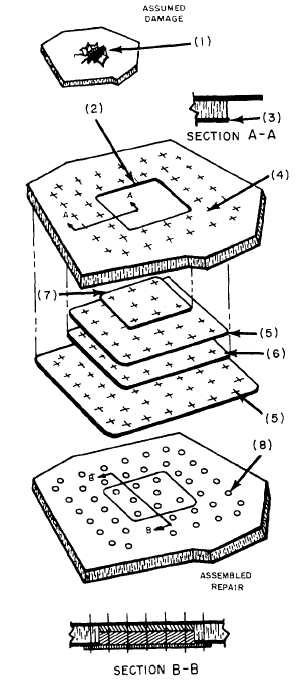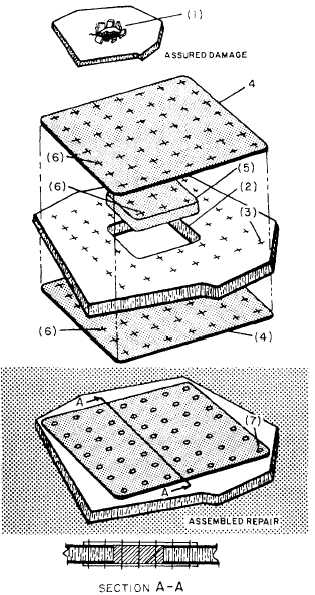Figure 14-18.—Balsa wood repair with flush patch.
When aerodynamic smoothness is not desired, a
nonflush patch such as the one shown in figure 14-19
can be used. Notice that this type of repair uses two
patch plates, a wood filler, and nonflush rivets. Other-
wise, the procedures described for the repair shown in
figure 14-18 are applicable to this type of repair.
Repairing The Trailing Edge of an Airfoil
A trailing edge is the rearmost edge of an airfoil
(wing, flap, rudder, elevator, etc.). It maybe a formed
or machined metal strip or possibly a metal-covered
honeycomb or balsa wood core material that forms
the shape of the edge by tying the ends of a rib section
together and joining the upper and lower skins. These
trailing edges are very easily damaged. The majority
of this type of damage can be avoided if care is taken
when moving aircraft in confined spaces, and/or
when positioning ground support equipment around
parked aircraft.
The trailing edges on some
high-performance aircraft are almost knife edge in
construction. You must take extreme care when
working around these surfaces to avoid injury.
Figure 14-19.—Balsa wood repair with nonflush patch.
14-17





